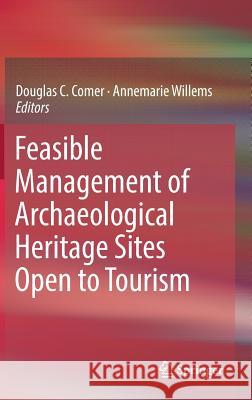Feasible Management of Archaeological Heritage Sites Open to Tourism » książka



Feasible Management of Archaeological Heritage Sites Open to Tourism
ISBN-13: 9783319927558 / Angielski / Twarda / 2018 / 183 str.
Feasible Management of Archaeological Heritage Sites Open to Tourism
ISBN-13: 9783319927558 / Angielski / Twarda / 2018 / 183 str.
(netto: 497,21 VAT: 5%)
Najniższa cena z 30 dni: 501,19
ok. 22 dni roboczych.
Darmowa dostawa!
Archaeological sites opened to the public, and especially those highly photogenic sites that have achieved iconic status, are often major tourist attractions.
Introduction: Feasibility as the Cornerstone of Effective Management of Public Archaeological Sites.- Chapter 1 - Cultural Value and Sustainable Development: A framework for assessing the tourism potential of heritage places.- Chapter 2 - Managing Herculaneum in context: measuring benefits for people and places.- Chapter 3 - Vikings and World Heritage – Towards New Strategic Synergies?.- Chapter 4 - The Tyranny of Materiality - Sacred Landscapes, Tourism and Community Narratives.- Chapter 5 - Sustainable archaeological tourism through standards for good practice.- Chapter 6 - Archaeotourism, Archaeological Site Preservation, and Local Communities.- Chapter 7 - The Curse of the Betrothed: Evaluating the Relationship between Archaeology and Tourism in Croatia AD 2017.- Chapter 8 - Archaeology and tourism in Ireland: bridging two cultures.- Chapter 9 - Archaeologist for a week – Voluntourism in Archaeology.- Chapter 10 - Archaeotourism Spaces in Present-day Poland: Thoughts on Reconstruction and Re-enactments.- Chapter 11 - The European Route of Megalithic Culture – Pathways to Europe’s earliest stone architecture.- Chapter 12 - Westphalian Megaliths go touristic: Archaeological research as a base for development of tourism.- Chapter 13 - Archaeology and Tourism – Problems and Possibilities: An Example from West Sweden.- Chapter 14 - The eScape Project: Combining Archaeology and Art to Merge the Past with the Present.- Conclusion - Feasibility Assessment at Public Archaeological Heritage Sites.
Archaeological sites opened to the public, and especially those highly photogenic sites that have achieved iconic status, are often major tourist attractions. By opening an archaeological site to tourism, threats and opportunities will emerge.The threats are to the archaeological record, the pre-historic or historic materials in context at the site that can provide facts about human history and the human relationship to the environment. The opportunities are to share what can be learned at archaeological sites and how it can be learned. The latter is important because doing so can build a public constituency for archaeology that appreciates and will support the potential of archaeology to contribute to conversations about contemporary issues, such as the root causes and possible solutions to conflict among humans and the social implications of environmental degradation.
In this volume we will consider factors that render effective management of archaeological sites open to the public feasible, and therefore sustainable. We approach this in two ways: The first is by presenting some promising ways to assess and enhance the feasibility of establishing effective management. Assessing feasibility involves examining tourism potential, which must consider the demographic sectors from which visitors to the site are drawn or might be in the future, identifying preservation issues associated with hosting visitors from the various demographic sectors, and the possibility and means by which local communities might be engaged in identifying issues and generating long-term support for effective management. The second part of the book will provide brief case studies of places and ways in which the feasibility of sustainable management has been improved.
1997-2026 DolnySlask.com Agencja Internetowa
KrainaKsiazek.PL - Księgarnia Internetowa









